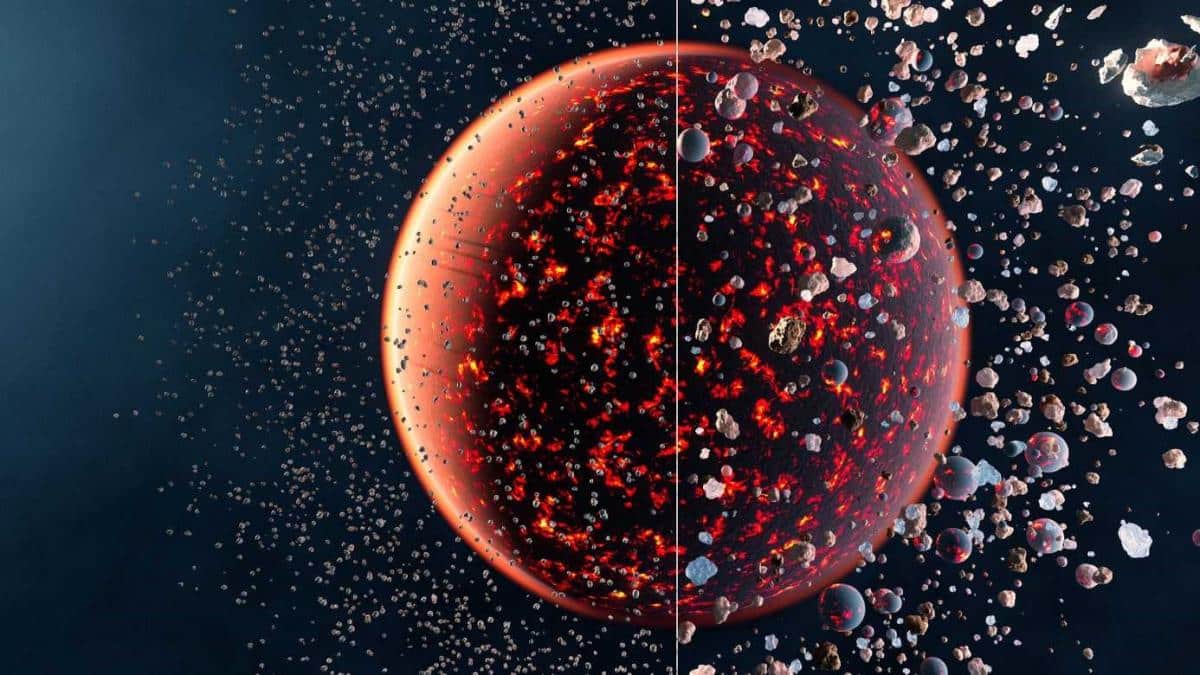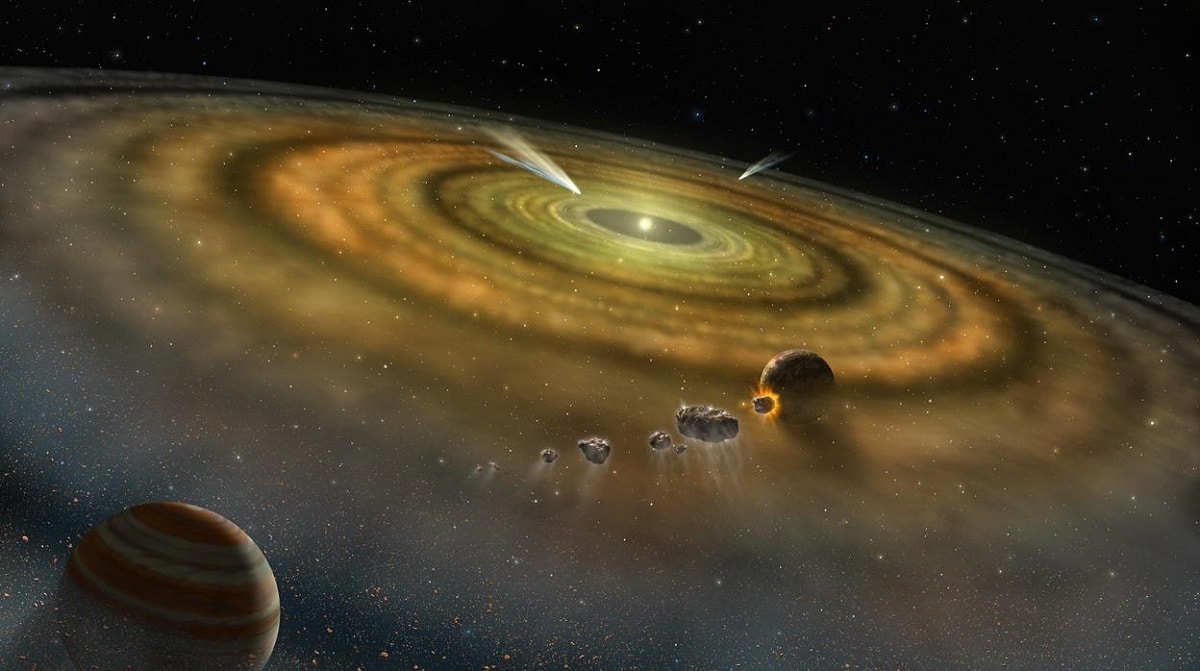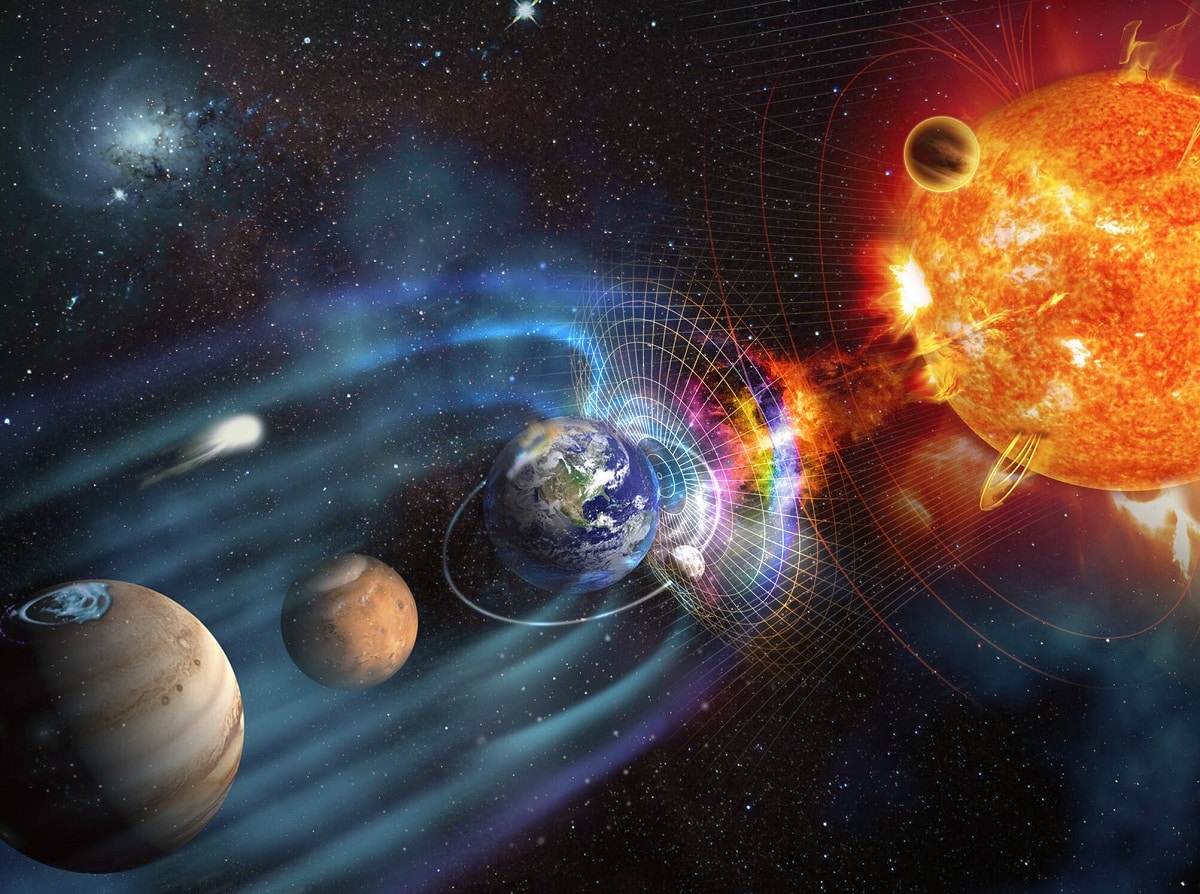
Throughout history, many scientists have been proposing various theories about the formation of the planets, the universe and the solar system. In this case, we are going to talk about the modern theory of planetesimals. This is a type of theory that suggests that planets formed through a nebula of gas and stellar dust.
In this article we are going to tell you about the characteristics of the modern theory of planetesimals, who suggested it and what repercussions it had in the world of astronomy and science.
What is the theory of planetesimals?

The theory of planetesimals is a hypothesis that tries to explain how planets are formed in our solar system and in other star systems. According to this theory, planets originate from a cloud of gas and dust called a protoplanetary nebula.
First, the theory postulates that the protoplanetary nebula is the result of a giant molecular cloud collapsing under the influence of gravity. As the cloud contracts, it begins to spin faster, leading to the formation of an accretion disk around a young star called a progenitor star.
Within this accretion disk, tiny particles of dust and ice, known as planetesimals, they begin to collide and accumulate due to gravitational forces. These planetesimals are the basis of future planets. As they continue to grow from collisions and mergers, planetesimals become protoplanets, which are developing planetary bodies.
One of the key characteristics of planetesimals is their size. These objects can range in size from a few kilometers to hundreds of kilometers in diameter. Its mass and composition can also be different, depending on the location within the accretion disk and the materials available.
Furthermore, the theory of planetesimals explains How are rocky planets and gas planets formed?. Rocky planets, such as Earth and Mars, form close to the parent star, where temperatures are high and solid materials prevail. Gas planets, such as Jupiter and Saturn, form in regions farther away, where temperatures are colder and gaseous and icy materials are more abundant.
As protoplanets continue to grow, they can capture more material and eventually become mature planets. Planetesimal theory provides a coherent explanation of how planets acquire their mass, orbit, and composition.
Who proposed this theory?

The theory of planetesimals has been developed and modified by various scientists throughout history. One of the first major contributors was the French astronomer and mathematician Pierre-Simon Laplace. Born in 1749, Laplace was known for his work on celestial mechanics and the theory of gravitation. His studies on the formation of the solar system and the stability of the planets laid the foundation for later ideas on planetesimals.
Another key scientist in this theory is the Swedish astronomer and astrophysicist Victor Safronov. Born in 1917, Safronov was recognized for his influential work on the formation and evolution of planetary systems. He proposed the planetesimal hypothesis and outlined its importance in the formation of the planets.
Also the astronomers Gerald Kuiper and George Wetherill, made significant contributions to the theory of planetesimals. Gerald Kuiper, born in 1905, was an astronomer known for his research on the solar system and the formation of the planets. His work was instrumental in understanding Kuiper belt objects and their relationship to planetesimals.
On the other hand, George Wetherill was an American astronomer born in 1925, and he excelled in the field of planetary science and cosmogony. He conducted fundamental research on the collision and accumulation of planetesimals, and developed numerical models to simulate their evolution and planet formation.
Importance of the theory of planetesimals in astronomy

The theory of planetesimals has great importance in the field of science and astronomy due to its numerous implications and contributions. This theory has provided a solid foundation for understanding the process of planet formation in our solar system and has laid the groundwork for the study of planet formation in other star systems. These are the main reasons for the importance of the planetesimal theory in astronomy:
- Origin of the solar system: The theory of planetesimals has made it possible to explain how our solar system was formed from a protoplanetary nebula. It helps to understand how planets, including our own, arose from smaller particles and how they evolved over time.
- Formation of extrasolar planets: This theory is not only applicable to our solar system, but has also been fundamental to the study and understanding of planet formation in other star systems. By observing and analyzing protoplanetary disks around young stars, astronomers have found evidence for the presence of planetesimals and have been able to infer how planets form in these regions.
- Composition and planetary evolution: The theory of planetesimals helps us to understand how the composition and structure of the planets is acquired. The collision and accumulation of planetesimals during planetary formation play a key role in determining the internal and external composition of planets, as well as in the evolution of their atmospheres and surfaces.
- Distribution of planets and planetary systems: This theory has contributed to the understanding of the distribution and diversity of planetary systems in the universe. It helps us understand why some star systems have rocky planets close to their star, while others have gas giants far from it. In addition, it provides information about the formation of moons and other celestial objects in orbit around the planets.
As you can see, this type of theory is one of the most supported in the world of science and thanks to it we better understand the formation of planets. I hope that with this information you can learn more about the theory of planetesimals and its importance.